Impact of the Seed Drill on Society

The seed drill is an invention that revolutionized agriculture and had a significant impact on society. Invented by Jethro Tull in the early 18th century, the seed drill enabled farmers to sow seeds in a more efficient and precise manner. This innovation brought about several changes in the agricultural industry and had far-reaching effects on society as a whole.
Before the seed drill, seeds were planted by hand, which was a time-consuming and labor-intensive process. The invention of the seed drill allowed farmers to plant seeds in a more systematic and controlled manner. The machine created evenly spaced rows of crops, ensuring that each plant had enough space to grow and thrive. This increased yield and reduced the amount of time and effort required for planting. Farmers were able to plant more acres of land and produce larger quantities of food.
In addition to improving efficiency, the seed drill also had a profound impact on crop quality. By planting seeds at a uniform depth, the machine ensured that every seed had an equal chance of germination. This led to more consistent crop growth and higher yields. Farmers no longer had to worry about wasting seeds or dealing with uneven growth patterns. The seed drill also helped to reduce weed growth, as the machine created furrows that covered the seeds, making it difficult for weeds to thrive.
The invention of the seed drill not only transformed the agricultural industry but also had wider societal implications. With increased crop yields, food became more abundant and affordable. The surplus of food led to improved nutrition and a decrease in famine and hunger. The seed drill also freed up labor, as fewer workers were needed for planting, allowing people to pursue other forms of employment outside of agriculture. This led to the growth of urban areas and the development of new industries.
Historical Background of the Seed Drill
The seed drill is an agricultural invention that revolutionized the way seeds were planted. It was invented by Jethro Tull, an English agriculturist, in the early 18th century. This device significantly improved the efficiency of the planting process and had a profound impact on agricultural practices and society as a whole.

Jethro Tull and his innovations
Jethro Tull was born in 1674 in Basildon, Berkshire, England. He was a highly influential figure in the field of agriculture and made significant contributions to farming techniques and machinery. Tull experimented with various methods to improve crop yields and increase agricultural productivity.
Tull was particularly concerned with the wastage of seeds and recognized the need for a more efficient way of planting them. Before the seed drill, seeds were usually sown by hand, which was a labor-intensive and imprecise process. Tull’s goal was to design a machine that could plant seeds uniformly and at a consistent depth, ensuring optimal germination rates and crop growth.
Development and design of the seed drill
In 1701, Tull began developing the seed drill, which he later patented in 1701 and 1702. The seed drill he designed was a horse-drawn machine that had a series of rotating disks. These disks created furrows in the soil into which the seeds were dropped at regular intervals. The machine also had a mechanism that covered the seeds with soil, ensuring they were properly buried.
Tull’s seed drill had several innovative features. It had a metering device that controlled the seed flow, ensuring that the right amount of seeds were planted in each furrow. The machine also had adjustable row spacing, giving farmers the flexibility to plant crops at different distances apart. Additionally, the seed drill was constructed in a way that prevented the seeds from clogging, allowing for uninterrupted planting.
Impact of the seed drill on society
The introduction of the seed drill had a significant impact on agricultural practices and society. With the seed drill, farmers could plant seeds in a more controlled and precise manner, leading to higher crop yields. This increased efficiency in planting also reduced the labor required for sowing, allowing farmers to allocate their resources more effectively.

The seed drill also enabled farmers to adopt new farming practices, such as crop rotation, more easily. By planting seeds at consistent depths and intervals, it became possible to implement crop rotation techniques that would otherwise be impractical using traditional manual sowing methods.
Moreover, the seed drill contributed to the agricultural revolution in Britain during the 18th century. It played a crucial role in increasing agricultural productivity and fueling population growth. As more food could be produced with less labor, surplus crops became available for trade and export, stimulating economic growth and paving the way for the industrial revolution.
In conclusion, Jethro Tull’s seed drill was a groundbreaking invention that revolutionized agriculture and had a profound impact on society. Its design and efficiency improved planting practices, increased crop yields, and played a key role in the agricultural and industrial revolutions of the 18th century.
Invention and Development of the Seed Drill
The seed drill is a revolutionary agricultural invention that has had a significant impact on society. It was invented and developed by Jethro Tull, an English agricultural pioneer, in the early 18th century.
Early Attempts
Jethro Tull’s interest in improving agricultural methods led him to experiment with various tools and techniques. In the early 1700s, he observed that seeds sown by hand were often wasted and unevenly distributed, leading to poor crop germination and growth. This sparked his determination to find a better solution.
Tull initially experimented with a machine that used a spinning wheel to distribute seeds. However, this design proved to be too cumbersome and ineffective, as it did not provide accurate spacing between seeds and required a lot of manual effort.
The Design of the Seed Drill
After several iterations, Tull finally developed the seed drill that had a lasting impact on agriculture. His design consisted of a wooden frame with a series of drill bits attached to it. These drill bits created small holes in the ground, where the seeds could be deposited at precise intervals. The seeds were then covered with soil to protect them from birds and ensure proper germination.
One of the key innovations of Tull’s seed drill was the use of a rotating cylinder that accurately measured the seed distribution. The seed drill also featured adjustable mechanisms for controlling the depth and spacing of the holes, allowing farmers to tailor their sowing methods to their specific crops and soil conditions.
Impact on Agriculture
The invention of the seed drill revolutionized agriculture by improving efficiency and productivity. Prior to its introduction, farmers had to sow seeds by hand, which was a time-consuming and labor-intensive process. With the seed drill, farmers could sow seeds much more quickly and accurately, leading to higher crop yields.
The seed drill also helped farmers achieve a more even distribution of seeds, reducing wastage and minimizing competition among plants for sunlight, water, and nutrients. This resulted in healthier and more robust crops.
Conclusion
The invention and development of the seed drill by Jethro Tull were pivotal moments in agricultural history. This innovative machine transformed the way seeds were sown, leading to increased productivity, improved crop quality, and ultimately, a significant impact on society as a whole.
Advantages of the Seed Drill in Agriculture
A seed drill is an agricultural tool that has revolutionized the way crops are planted. Its invention and widespread use have brought numerous advantages to agriculture, improving efficiency and productivity for farmers. Here are some of the key advantages of the seed drill:
1. Precise and Consistent Seed Placement
One of the main advantages of the seed drill is its ability to plant seeds with precision and consistency. Unlike traditional methods where seeds were scattered by hand, the seed drill ensures that each seed is placed at the correct depth and spacing. This results in better seed germination and uniform plant growth, leading to higher crop yields.
2. Time and Labor Efficiency
Using a seed drill significantly reduces the time and labor required for planting crops. With the seed drill, farmers can cover larger areas in a shorter period of time compared to manual planting methods. This allows them to save time and allocate their labor resources more efficiently.
3. Weed Control
The seed drill helps in controlling weeds, which can be detrimental to crop growth. By placing seeds at the correct depth, the seed drill ensures that the crop plants receive the necessary nutrients and sunlight, while the germination of weed seeds is hindered. This reduces competition between crops and weeds, resulting in improved crop quality.
4. Conservation of Seeds
Prior to the invention of the seed drill, farmers often wasted a significant amount of seeds during planting. With manual planting methods, seeds would often be scattered unevenly or lost in the soil. The seed drill solves this problem by placing seeds at a consistent depth and spacing, minimizing seed wastage and allowing farmers to make the most out of their seed resources.
5. Faster Planting and Harvesting
The use of a seed drill enables faster planting and harvesting cycles. By accurately depositing seeds in the ground, farmers can ensure that crops are planted at the optimal time for growth. This leads to synchronized growth and maturity, allowing for more efficient harvesting and overall better crop management.
6. Increased Crop Yields
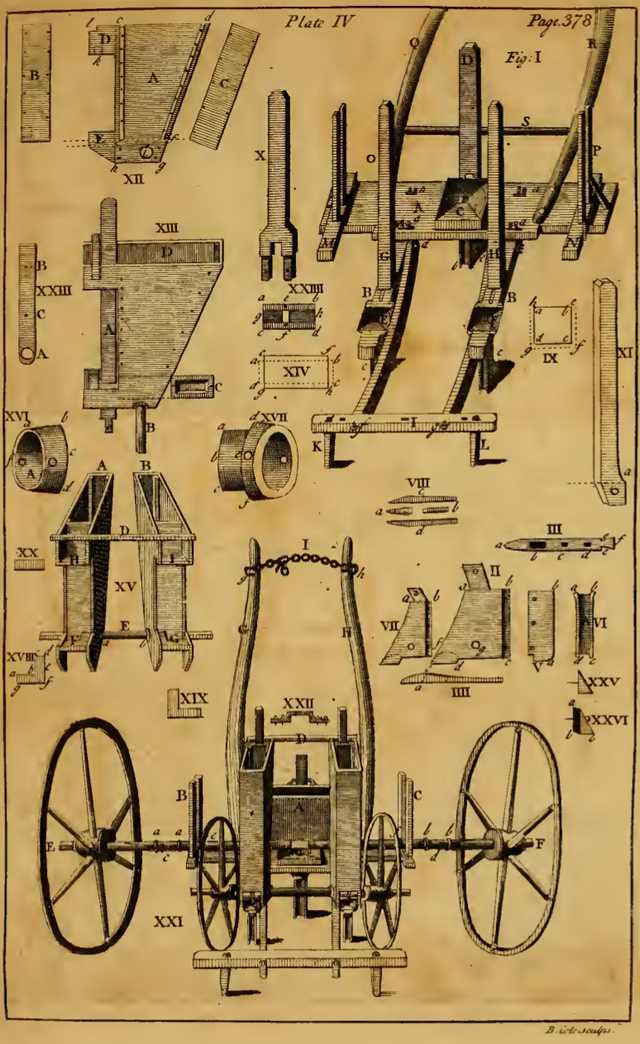
Ultimately, the seed drill helps in achieving higher crop yields. With precise seed placement, reduced weed competition, and improved plant growth, farmers can expect to harvest more bountiful crops. This not only benefits individual farmers but also contributes to overall food production and security.
In conclusion, the seed drill has brought significant advantages to agriculture. By enabling precise seed placement, saving time and labor, controlling weeds, conserving seeds, facilitating faster planting and harvesting, and increasing crop yields, the seed drill has greatly enhanced the efficiency and productivity of farming practices.
Revolutionizing Crop Production
The invention of the seed drill had a profound impact on crop production, revolutionizing the way farmers planted their crops and significantly increasing agricultural efficiency. Before the seed drill, farmers would sow seeds by hand, scattering them randomly across the field. This manual method was highly inefficient, resulting in uneven distribution of seeds and often leading to poor crop yields.
The seed drill, introduced in the 17th century by Jethro Tull, changed the game by mechanizing the process of planting seeds. This innovative device allowed farmers to plant seeds in a precise manner, ensuring proper spacing and depth for optimal growth. The seed drill consisted of a hopper that held the seeds, a series of tubes that delivered the seeds to the ground, and a rotating mechanism that distributed the seeds evenly.
One of the key benefits of the seed drill was its ability to improve seed germination rates. By placing the seeds at a consistent depth, the seed drill provided them with the necessary conditions for successful germination. This resulted in more even and uniform crop growth, leading to higher overall yields.
Another advantage of the seed drill was its ability to save time and labor. With the seed drill, farmers no longer had to manually sow seeds by hand, a tedious and time-consuming task. Instead, they could simply load the seeds into the hopper of the seed drill and let the machine do the work. This allowed farmers to cover larger areas of land in a shorter amount of time, increasing productivity and efficiency.
The seed drill also had a significant impact on crop rotation practices. Prior to its invention, farmers often had difficulty implementing crop rotation due to the labor-intensive nature of sowing seeds. However, with the seed drill, it became much easier for farmers to switch between crops, as they could quickly and accurately plant different types of seeds.
Overall, the seed drill revolutionized crop production by improving seed germination rates, saving time and labor, and facilitating crop rotation practices. Its introduction marked a major milestone in agricultural technology and played a crucial role in increasing agricultural productivity and feeding growing populations.
Economic and Social Implications
Increase in Agricultural Productivity
The invention of the seed drill marked a significant milestone in agricultural history, with a profound impact on productivity. Before the seed drill, seeds were sown by hand, leading to uneven distribution and waste. The seed drill allowed for precise planting of seeds at the optimal depth and spacing, resulting in higher crop yields. Farmers could plant more efficiently and effectively, maximizing their output and increasing their income potential.
By reducing the labor required for sowing seeds, the seed drill also freed up farmers to focus on other important tasks, such as tending to crops or livestock. This shift in labor allocation improved overall agricultural efficiency and contributed to economic growth.
Improved Crop Quality
The seed drill enabled farmers to achieve more uniform crop growth, resulting in improved crop quality. By ensuring consistent seed placement, the seed drill minimized the competition between plants, enabling them to grow with ample space and access to sunlight, water, and nutrients.
Uniform growth and proper spacing also facilitated better disease and pest management. With healthier and more robust plants, farmers were able to reduce crop losses and maximize their yields. Additionally, the seed drill allowed for selective breeding and the cultivation of desirable crop varieties, further improving crop quality.
Expansion of Agricultural Land
The increased efficiency and productivity brought about by the seed drill contributed to the expansion of agricultural land. With higher yields and more consistent crop growth, farmers were better equipped to meet the growing demands for food, both locally and globally.
This expansion of agricultural land had broader implications for society. With more land dedicated to farming, there was a need for increased infrastructure, such as roads and transportation networks, to support the transportation and trade of agricultural produce. This led to the development of towns and cities, as well as the growth of trade and commerce.
Socioeconomic Impact
The seed drill played a crucial role in the transformation of agriculture, leading to significant socioeconomic changes. The increased productivity and improved crop quality resulting from the seed drill led to a surplus of agricultural produce, which could be traded and sold. This surplus drove economic growth and stimulated the development of markets and trade networks.
Furthermore, the increased efficiency in agriculture reduced the reliance on manual labor, leading to a shift in the workforce from agriculture to other sectors, such as manufacturing and services. This shift contributed to the Industrial Revolution and the rise of urbanization.
The seed drill also had implications for social structures and living conditions. With the expansion of agricultural land, more people could be supported by farming, reducing poverty levels and improving overall living standards. Additionally, the surplus of food made possible by the seed drill allowed for population growth, shaping demographic trends and societal structures.
In conclusion, the seed drill revolutionized agriculture by improving productivity, crop quality, and land utilization. Its economic and social implications transformed societies by driving economic growth, stimulating trade, supporting urbanization, and shaping demographic trends.
Impact of the Seed Drill on Farming Communities
Increased Efficiency and Productivity
The introduction of the seed drill in farming communities had a profound impact on their efficiency and productivity. Before the seed drill, farmers had to sow seeds by hand, which was a time-consuming and labor-intensive process. However, with the seed drill, farmers could quickly and accurately sow seeds in rows, resulting in a significant reduction in the time and effort required for planting.
By improving the efficiency of planting, the seed drill allowed farming communities to cultivate larger areas of land, leading to increased crop yields. This increase in productivity had a positive impact on the local economy, as farmers were able to produce surplus crops that could be sold or used for trade.
Improved Crop Quality
Another significant impact of the seed drill on farming communities was the improvement in crop quality. By sowing seeds at a consistent depth and spacing, the seed drill created optimal conditions for seed germination and plant growth. This resulted in more uniform crops with better plant health and reduced competition for resources.
The improved crop quality not only increased the overall yield but also enhanced the marketability of the crops. Farming communities were able to produce higher quality products that commanded better prices in the market, further boosting their economic prosperity.
Reduced Labor Requirements
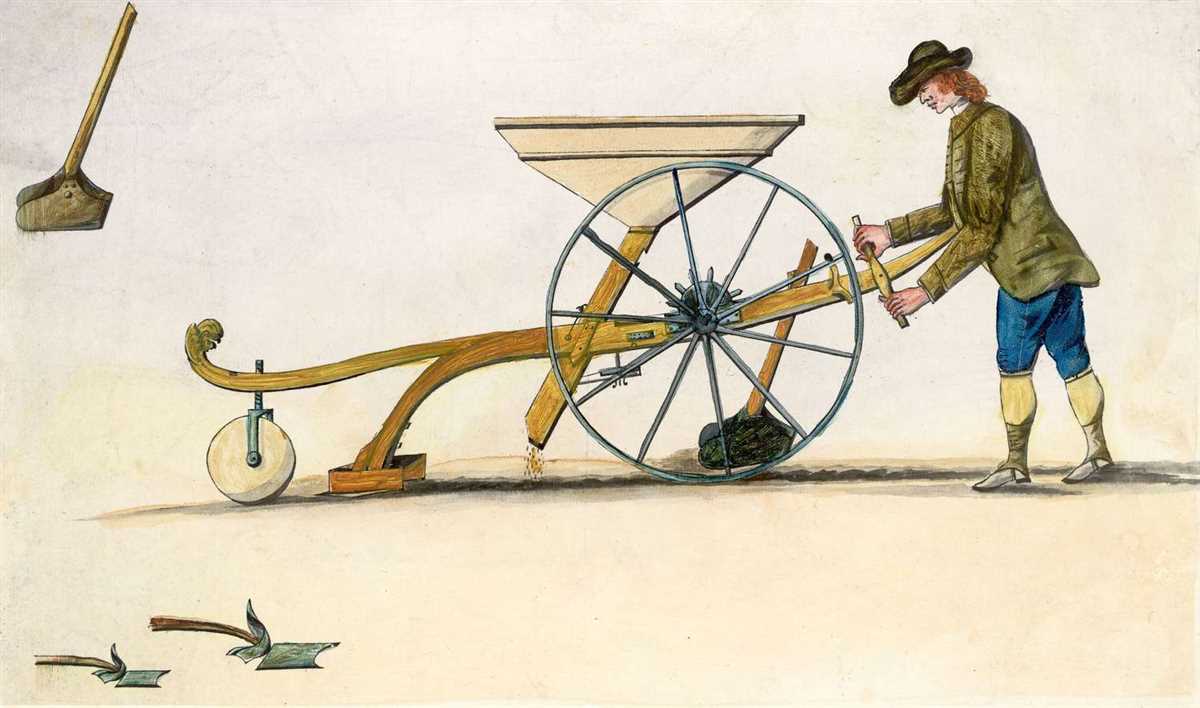
The seed drill’s mechanized planting process significantly reduced the labor requirements in farming communities. Instead of relying on manual labor for seed sowing, farmers could now use the seed drill to cover larger areas with fewer workers. This freed up labor resources that could be redirected to other essential farming tasks, such as irrigation, fertilization, and pest control.
The reduced labor requirements also had a social impact on farming communities. With fewer farmers needed for seed sowing, individuals were able to pursue other occupations or engage in non-agricultural activities. This diversification of employment opportunities brought about by the seed drill contributed to the development of rural communities and improved their overall quality of life.
Environmental Impact
The introduction of the seed drill also had a positive environmental impact on farming communities. By ensuring that seeds were planted at the proper depth and spacing, the seed drill minimized seed wastage and reduced the need for thinning out excess seedlings. This conservation of seeds not only saved money for farmers but also reduced the overall demand for seed production, leading to less pressure on natural resources.
The seed drill’s ability to create uniform rows of crops also facilitated better weed control, as farmers could more easily identify and remove weeds. This reduced the reliance on chemical herbicides and fostered a more sustainable and environmentally-friendly approach to farming.
| Impact | Description |
|---|---|
| Increased Efficiency and Productivity | Reduced time and effort required for planting, allowing for larger cultivated areas and higher crop yields |
| Improved Crop Quality | Consistent seed sowing resulted in more uniform crops with better plant health and marketability |
| Reduced Labor Requirements | Freed up labor resources for other farming tasks and enabled diversification of employment opportunities |
| Environmental Impact | Minimized seed wastage, reduced dependence on chemical herbicides, and promoted sustainable farming practices |
Increased Food Production and Population Growth
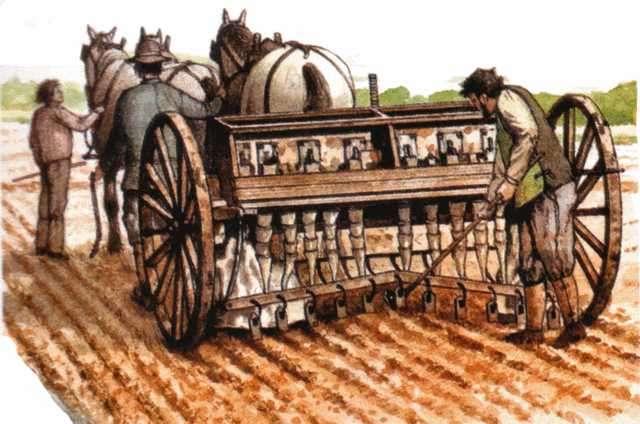
The introduction of the seed drill had a significant impact on food production and population growth. This agricultural invention revolutionized the way crops were planted and cultivated, leading to higher yields and increased efficiency in farming practices.
Improved Crop Planting Techniques
- The seed drill allowed for precise and uniform seed placement, ensuring optimal growth conditions for crops.
- Previously, seeds were sown by hand, resulting in uneven distribution and wastage.
- With the seed drill, farmers could accurately measure the distance between seeds and control the depth of planting.
Higher Crop Yields
- The seed drill facilitated the planting of seeds in rows, optimizing space and maximizing the number of plants per acre.
- This technique prevented crowding and competition among plants, leading to healthier growth and increased productivity.
- By ensuring that each seed had sufficient space and nutrients, crop yields significantly improved.
Expansion of Agricultural Land
- The increased efficiency of seed drilling allowed farmers to expand their cultivated land areas.
- Less time and labor were required for planting, allowing farmers to cover larger areas and grow more crops.
- As a result, agricultural production expanded, providing a surplus of food to sustain a growing population.
Population Growth and Economic Development
- The availability of abundant food due to increased food production resulted in population growth.
- With improved agricultural practices, societies were able to support larger populations and build thriving communities.
- Increased food production also had economic benefits, as surplus crops could be sold or traded, contributing to regional and national economies.
Overall, the seed drill played a pivotal role in the development of modern agriculture and its impact on society cannot be overstated. By increasing food production and enabling population growth, it laid the foundation for the booming agricultural industry we see today.
Continuing Influence and Legacy of the Seed Drill
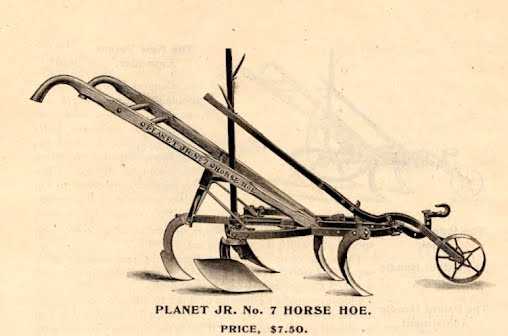
The seed drill, invented by Jethro Tull in the 18th century, revolutionized agriculture by increasing the efficiency of sowing seeds. While its design and mechanisms have evolved over time, the seed drill’s impact on society has had a lasting influence that can still be observed today.
Improved Farming Practices
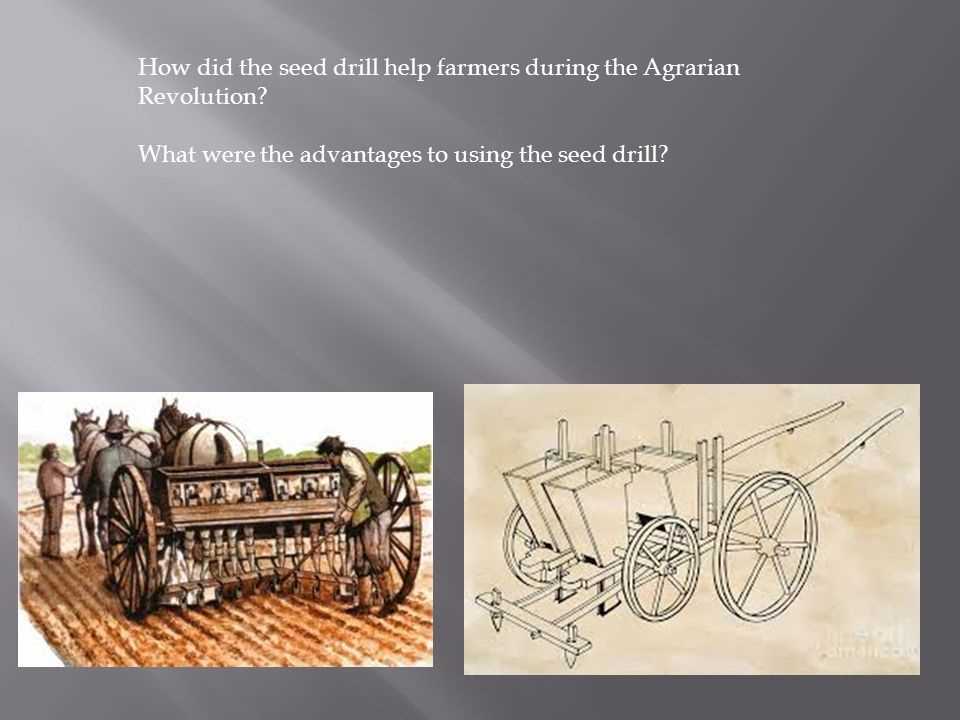
The seed drill introduced a methodical way of planting seeds, allowing farmers to achieve more precise and uniform distribution of seeds. This resulted in increased crop yield and reduced wastage of seeds, as compared to traditional methods of hand broadcasting. The use of the seed drill also allowed for better spacing between plants, contributing to improved plant growth and overall crop quality.
Furthermore, the seed drill enabled farmers to save time and labor by automating the process of seed sowing. This freed up resources that could be allocated to other agricultural tasks, ultimately increasing agricultural productivity and efficiency.
Environmental Impact
The seed drill played a significant role in environmental conservation by reducing soil erosion. Prior to the invention of the seed drill, seeds were often scattered haphazardly across fields, which led to uneven growth and exposed the soil to erosive forces. By sowing seeds at a controlled depth and spacing, the seed drill helped to stabilize the soil, preventing erosion and preserving its fertility.
In addition, the more precise planting facilitated by the seed drill reduced the need for excessive tilling and plowing, which can cause soil compaction and degradation. This preservation of soil health and structure proved to be a significant contribution to sustainable farming practices.
Modern Agricultural Machinery
The principles and concepts behind the seed drill continue to influence modern agricultural machinery. The precision and uniformity achieved by the seed drill’s mechanisms have been incorporated into the design of various planting equipment, including direct seeders and planters used in contemporary farming practices.
Moreover, the idea of automating agricultural processes introduced by the seed drill has paved the way for the development of other advanced machinery, such as combine harvesters and crop sprayers. These machines enable farmers to accomplish tasks more efficiently, resulting in increased agricultural productivity and reduced labor requirements.
In conclusion, the seed drill’s continuing influence and legacy can be seen in improved farming practices, environmental conservation, and the development of modern agricultural machinery. Its impact on society has been profound, contributing to increased food production, sustainable farming practices, and the advancement of agricultural technology.
FAQ:
What is a seed drill?
A seed drill is a machine that is used for planting seeds in uniform rows and at a specific depth in the soil. It is a significant advancement in agricultural technology that has greatly improved the efficiency and productivity of farming.
How did the seed drill impact society?
The seed drill had a profound impact on society. It revolutionized agriculture by allowing farmers to plant seeds at a faster rate and with greater accuracy. This led to increased crop yields, improved food production, and a higher availability of food. It also reduced the labor needed for planting, allowing farmers to focus on other tasks.Overall, the seed drill played a crucial role in the agricultural revolution and contributed to the development of modern farming practices.
Who invented the seed drill?
The seed drill was invented by Jethro Tull, an English agriculturalist, in the early 18th century. Tull’s design of the seed drill was a major breakthrough in farming technology at the time and laid the foundation for modern agricultural practices.
What were the advantages of using a seed drill?
The use of a seed drill had several advantages. Firstly, it allowed for the precise placement of seeds in the soil, resulting in more uniform and efficient growth. Secondly, it reduced the amount of seed wastage, as seeds were not scattered haphazardly. Thirdly, it saved time and labor, as farmers could plant seeds in a faster and more systematic manner. Lastly, it improved crop yields and overall food production, addressing the needs of a growing population.
Did the seed drill have any disadvantages or negative impact on society?
While the seed drill brought numerous benefits, it also had some disadvantages. One of the main concerns was the initial cost of purchasing the machinery, which was often expensive for small-scale farmers. This led to the concentration of land ownership in the hands of larger farmers who could afford the technology. Additionally, the use of the seed drill required a certain level of skill and knowledge, which not all farmers possessed. This created a divide between those who could effectively use the seed drill and those who could not, further exacerbating social and economic inequalities in rural areas.
Video:





